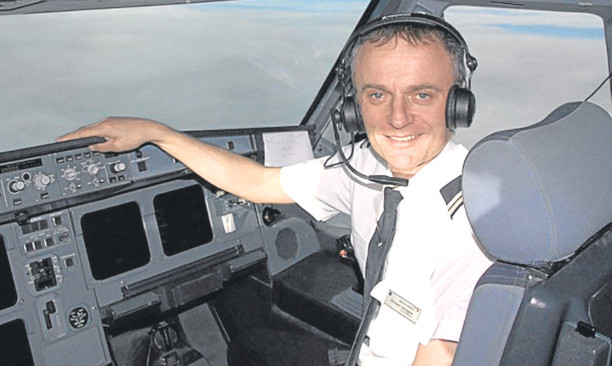
A pilot’s evidence from beyond the grave has sparked new concerns that airline crews and passengers are being poisoned by toxic fumes.
Tests on former British Airways man Richard Westgate have produced compelling evidence that exposure to contaminated cockpit air caused his death.
The 43-year-old passed away in December 2012 after complaining he was suffering from severe headaches, mental confusion, sight problems and insomnia brought on by years of flying.
Prior to his death he instructed lawyers to sue BA for alleged breach of health and safety guidelines. His legal team continued with the action claiming they wanted to give Richard “the trial he never got”.
A wide-ranging probe into Richard’s death which looked at the evidence he gave before his passing has just been published in the Journal of Biological Physics and Chemistry. It found hazardous fumes called organophosphates did affect his health.
Richard, a world record-breaking paraglider, is one of two pilots to have passed away after complaining about exposure to toxic fumes on passenger jets. Fellow pilot Karen Lysakowska, 43, also died in December 2012 amid claims she had been poisoned by contaminated air.
Before their deaths, Richard, of Edinburgh, instructed aviation lawyer Frank Cannon to sue BA. Mr Cannon, of Glasgow law firm Cannons Law, said: “We believe that constant exposure to fuel leaks in planes contributed to Richard’s death. This scientific research proves that Richard suffered from chemicals called organophosphates which cause chronic brain and other problems. This happens because of constant exposure working aboard aircraft.”
Civil Aviation Authority records reveal that pilots and crew have to put on oxygen masks at least five times a week to combat suspected “fume events”. The law firm is acting for 25 people who claim they are suffering ill-effects from hazardous fumes on planes.
Pilot John Hoyte, head of support group the Aerotoxic Association, is among those who believe the fumes are endangering the health and safety of crews and passengers. He is campaigning for toxic air detectors on board all flights. He said: “Countless air crew and passengers are suffering but this scientific report finally gives us the recognition that exposure to toxins from oil fumes can cause serious ill health.”
Last year a pilot flying from Heathrow to Philadelphia was forced to make an emergency landing at a remote military base in Canada after toxic fumes seeped into the cockpit. And last month three cabin crew went off sick after complaining about fumes on a flight from Heathrow to Newcastle. The problem was found to be caused by oil dripping into a motor at the rear of the plane.
A spokesman for British Airways said: “It would be inappropriate to comment or speculate on the cause of death of an indivdual. The safety and security of our customers and crew are of paramount importance to British Airways and will never be compromised.”

Enjoy the convenience of having The Sunday Post delivered as a digital ePaper straight to your smartphone, tablet or computer.
Subscribe for only £5.49 a month and enjoy all the benefits of the printed paper as a digital replica.
Subscribe